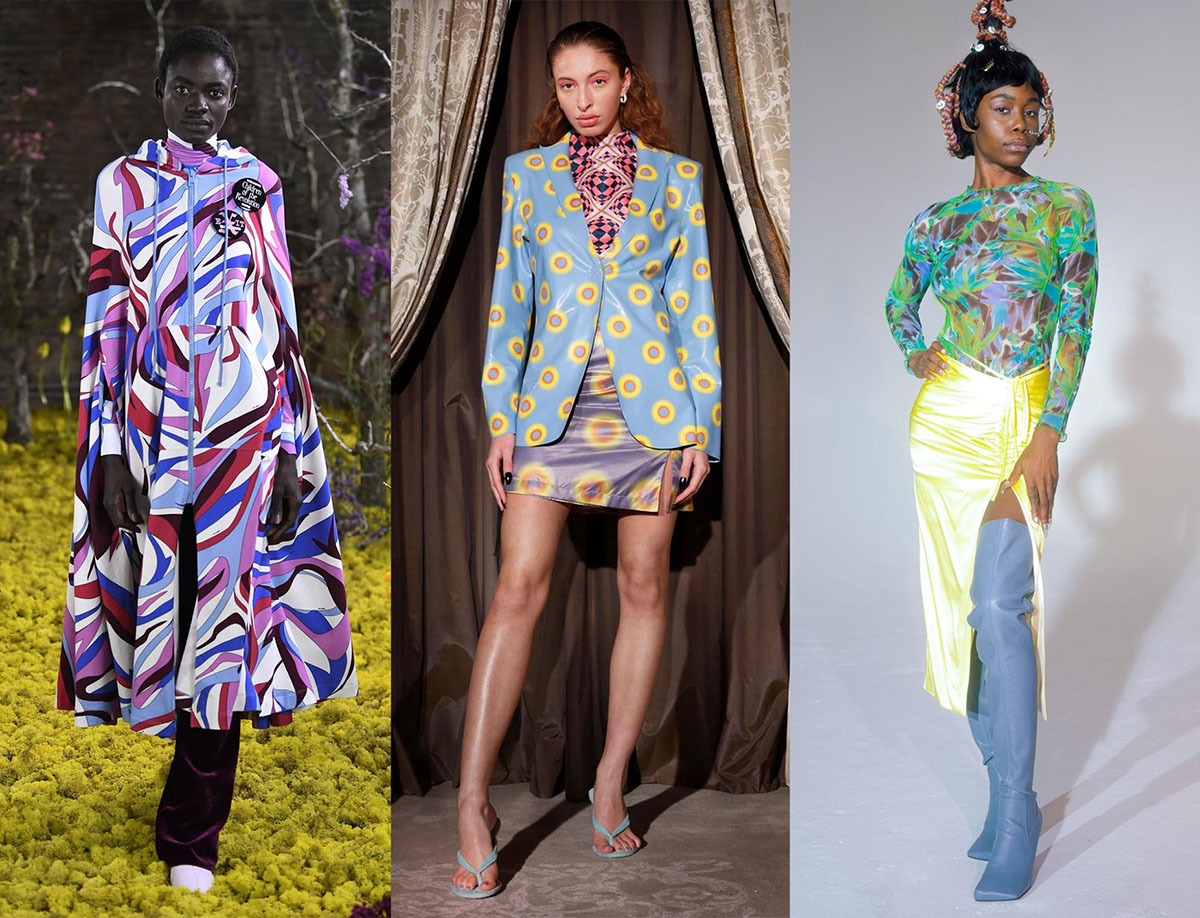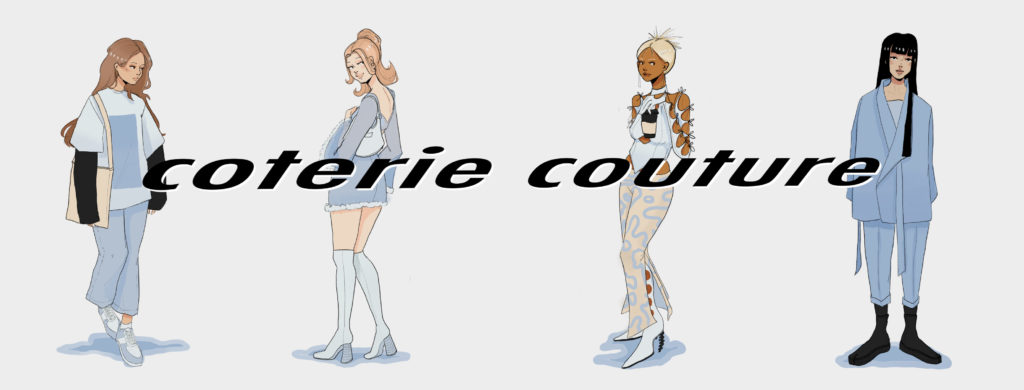Coterie Couture: Cultural resurgence of psychedelia encourages optimism through fashion

(From left to right: Courtesy of Hypebae, Evening Standard, Dazed)
By Natalie Brown
Oct. 3, 2021 9:48 p.m.
What someone wears speaks volumes about who they are as a person and the same can be said for the styles associated with various movements and cultures. As a cyclical art form, fashion – and its attached politics – almost always reemerges from the past. Follow columnist Natalie Brown in “Coterie Couture” as she chronologically explores the impact of different subcultures and their corresponding fashion each week.

The history behind psychedelia is a trip.
Rather than being born out of one particular tradition, the psychedelic ’60s were an amalgamation of different cultural practices, centered around drug use. Behind the mainstream conceptions of this era, the culture was rooted in Native American mystical hallucinogenic traditions, the proliferation of LSD use and advancement in technology, said musicology professor Robert Fink. However, these roots are best understood by analyzing the corresponding fashion of the time, which Fink said boasts a combination of electrifying colors and magnifying prints.
“(Psychedelic fashion) is much more about the personal perceptual distortions that LSD is associated with,” he said. “People want to dress like an LSD experience.”
At the beginning of the psychedelic era, LSD was perceived as a medical and scientific breakthrough, thought to revolutionize psychiatric treatment through its distinct hallucinogenic properties, Fink said. Because it technically wasn’t an illegal substance for a brief period of time, everyone from literary intelligentsia types to college-aged kids was dropping LSD, he said, as a means to access the transcendental perspectives of medieval mystics and philosophers.
It is this idea of an otherworldly aesthetic that links aspects of psychedelic music, fashion and culture with the experience of taking LSD, thus defining the visual identity of the psychedelic era as threefold, he said. The first component of this identity is dynamization, Fink said, which is the idea of images swirling and changing shape, imitating the effect of LSD on an individual’s perspective. In fashion, this gives rise to bold prints, such as paisley and tie-dye, he said.
The second and third components of psychedelia’s visual identity – depersonalization and an altered sense of time – are acquainted with the idea of losing one’s sense of self while taking the hallucinogenic drug. Fink said LSD causes an out-of-body experience, creating a space in which users can feel detached from the universe and their surroundings. These last two aspects are manifested in the fashion world through layering a variety of signifying clothing items indicative of different groups throughout history together, he said.
“People were being encouraged to dress like people they associate with psychedelics,” Fink said. “(There are) all kinds of cultural figures like the Native Americans, medieval mystics and Eastern religious figures (associated with these), becoming a big hope chest out of which (people) can pull various types of clothing signifiers and mix them together.”
[Related: Alumnus-run clothing brand expands, creates home for artists of all mediums]
While psychedelia was popularized by the San Francisco acid-rock scene, Fink said it wasn’t just middle-class college students who were participating in its associated fashion. Celebrities and artists alike also put together these ensembles of different layered patterned clothes, emulating the cornerstones of depersonalization and disorientation that are synonymous with taking LSD.
“(Layering different clothing pieces) becomes a collage effect,” Fink said. “(Artists like the Beatles and the Rolling Stones) assembled their wardrobe with various types of clothing that mostly would not be worn by the same person who wasn’t on drugs.”
With wavy prints and surreal imagery, psychedelic clothing has begun to infiltrate modern high-end fashion labels today, embodying the idea of “dopamine dressing,” or wearing clothes that make people feel happy, said fashion journalist Max Berlinger. Brands like The Elder Statesman are releasing luxury cashmere sweaters embellished with whimsical tie-dye prints and mushroom iconography, while other international brands are borrowing Deadhead visuals inspired by the Grateful Dead.
As hard as one may try, the iconography and ideology of the ’60s will never go away, Fink said, as fashion and culture are both cyclical. This concept already led to several resurgences of the psychedelic ’60s, the first being in the ’90s surrounding the use of ecstasy and MDMA. However, today, Fink said there seems to be another cultural resurgence reminiscent of the psychedelic ’60s. Marijuana, much like LSD in its heyday, is now a legal drug in some states in America.
“There are people who are always trying to evoke the ’60s by bringing back the psychedelics, the fashion and music because the fantasies and dreams of the ’60s represent America,” Fink said.
[Related: Student stitches fashion with sustainability to create vibrant upcycled clothes]
The resurgence of psychedelia may not solely be related to America’s changing drug landscape, however. In an image-heavy culture, Berlinger said psychedelic fashion and imagery refreshingly intervenes with the popular minimalist aesthetic that is taking over runways, embodying ideas of freedom and individuality. Graphically, psychedelic patterns and styles are eye-catching and impactful – they demand attention.
While this drastic need for intervention built a strong foundation for a psychedelic resurgence before the pandemic, he said the shock of COVID-19 only served to amplify psychedelia’s popularity when the world saw an uptake in a “hippie craft movement,” with tie-dying and DIYing. Most importantly, however, Berlinger said psychedelic fashion possesses a much-needed air of optimism for those who choose to don its distinct styles and patterns.
“The ’60s and ’70s were a really optimistic time – a time of free love,” Berlinger said. “We were more hopeful as a country, looking towards the future with optimism, and right now there is not a lot of that happening. There’s a lot of fear and anxiety, so designers are trying to tap into a look that conjures up the feeling of hope and emotions that are positive.”


